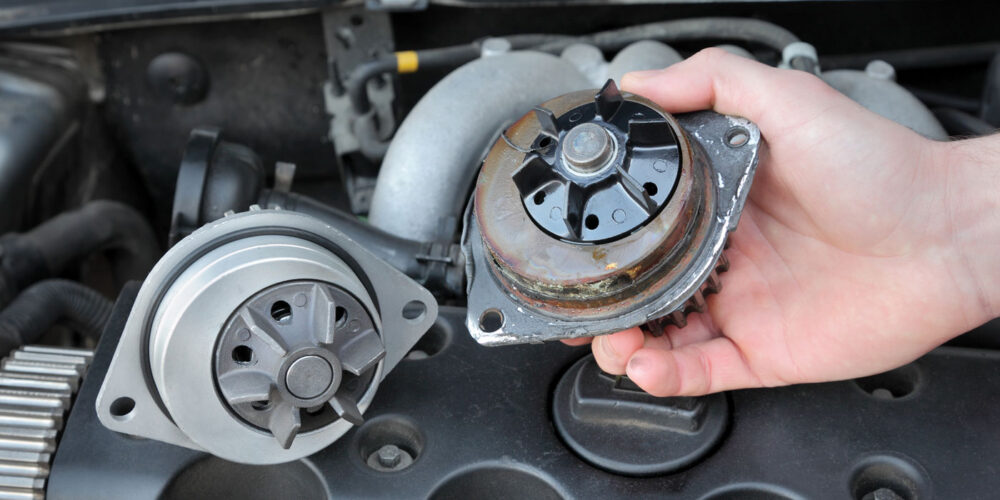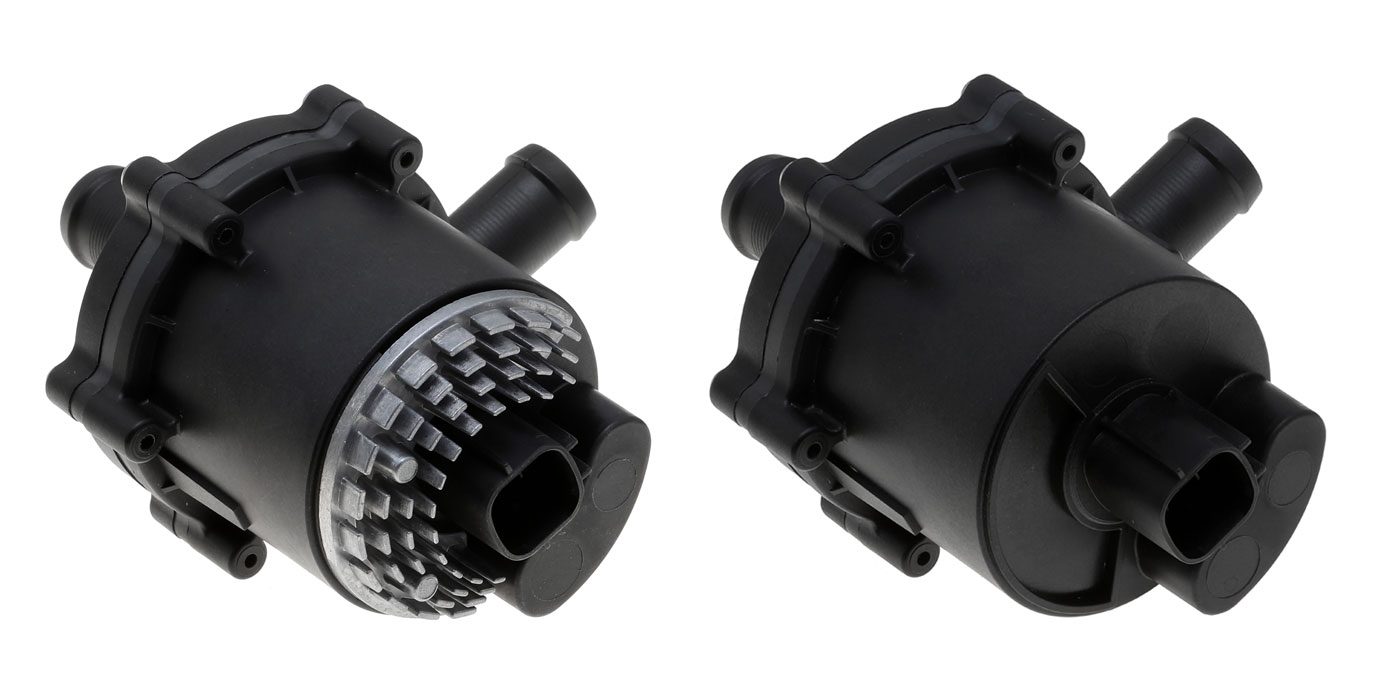The water pump is a vehicle component that needs no introduction. For most vehicle owners, however, they don’t think about it until something goes wrong.
As the only moving part of the cooling system, the water pump plays a vital role in keeping the vehicle running optimally in all weather conditions. Water pumps usually last a long time – 100,000 miles or more on average. When a water pump fails, though, the results can be catastrophic for the engine.
Let’s talk about some common causes of premature water-pump failure.
Coolant Contamination
Coolant can become contaminated with dirt, debris or other substances that can wear down the water pump’s internal components, including the seals and bearings. This contamination can accelerate wear and lead to early failure.
Cavitation
This phenomenon occurs when vapor bubbles form in the coolant near the pump’s impeller blades, causing shock waves when they collapse. Over time, this can lead to pitting and erosion of the impeller blades, reducing the pump’s effectiveness.
Improper Coolant Mixture
Many water-pump failures are caused by factors other than a faulty pump. Using the wrong coolant mixture or water-to-coolant ratio can cause corrosion and deposits within the pump, reducing its efficiency and lifespan. Additionally, incorrect coolant types can chemically react with pump components, causing deterioration.
Bearing Failure
Bearings within the water pump allow the impeller to spin smoothly. Over time, these bearings can wear out or fail – often due to tension from a misaligned or overtightened belt – leading to noise, leaks or a seized pump.
Thermal Stress and Fatigue
Constant exposure to fluctuating temperatures can cause the metal components of the water pump to expand and contract, leading to stress fractures and eventual failure.
Leakage and Seal Failure
The water pump’s seals are prone to wear and degradation over time, leading to coolant leaks. Such leaks not only reduce the efficiency of the cooling system but also can cause overheating and further damage to the water pump and surrounding components.
Warning Signs
Recognizing the early signs of water-pump failure can prevent more significant engine damage. Here are some key indicators:
1. Coolant leak – One of the most straightforward signs is a coolant leak at the front of the vehicle, typically near the center. This can indicate a failed seal or gasket in the
water pump.
2. Overheating engine – If the water pump isn’t circulating coolant effectively, the engine temperature can rise, leading to overheating. Persistent overheating, especially under normal driving conditions, should prompt an inspection of the cooling system, including the water pump.
3. Strange noises – A failing water pump can produce a variety of noises, such as whining or grinding, often due to bearing failure or an impeller rubbing against the pump housing.
4. Steam from radiator – Seeing steam emanate from the radiator is a clear sign of overheating, which could be due to a malfunctioning water pump.
5. Corrosion and deposit build-up – Visible corrosion or significant scaling on the water pump or surrounding components can indicate a failing pump, often due to improper coolant use or leaks that allow air into the system.
While the service life of most OE water pumps should be 100,000 miles or longer, a cheap replacement pump might not make it 30,000 miles before it starts to leak. To keep your customers happy, it’s always a good idea to recommend a well-built, high-quality water pump from a trusted manufacturer. And when they’re replacing the water pump, you’ll want to check if they need any gaskets, hoses, coolant, belts or a thermostat.
Also, if your customer who just purchased a new aftermarket water pump from you doesn’t flush the system and use new coolant when they install the new pump, there’s a good chance you’ll be hearing from them sooner rather than later with a warranty return. You should encourage your customers to follow the vehicle’s recommended flush-and-fill schedule, and to always use the coolant specified by the vehicle manufacturer. Most coolant suppliers do not recommend intermixing different brands or types of coolant in the same cooling system, due to the risk of coolant-gelling, corrosion or abrasion of water-pump seals.













